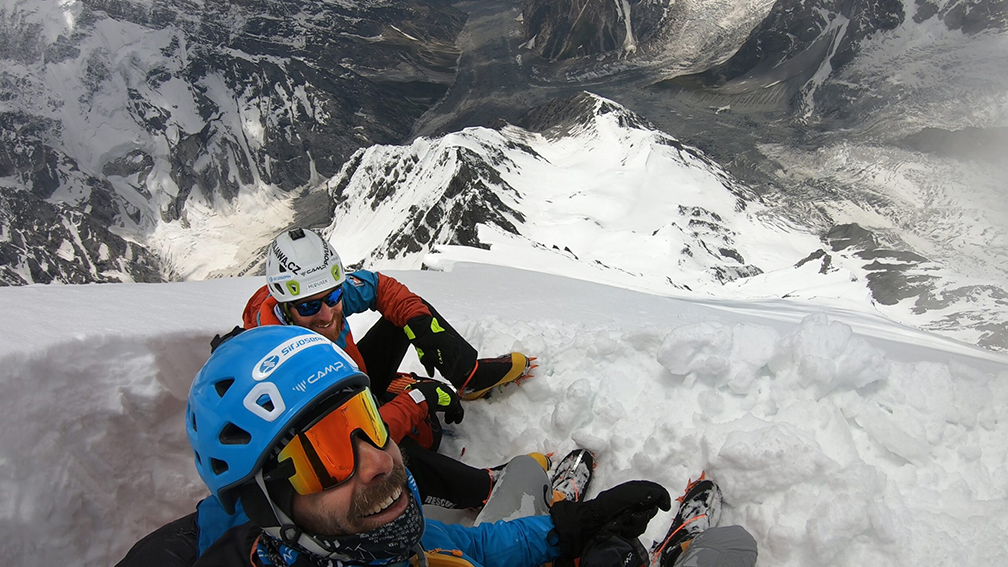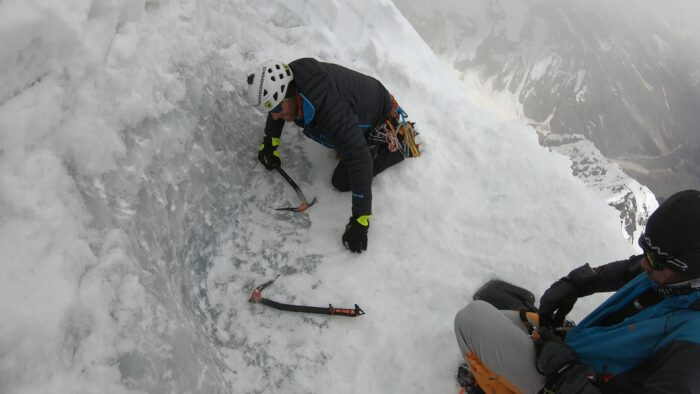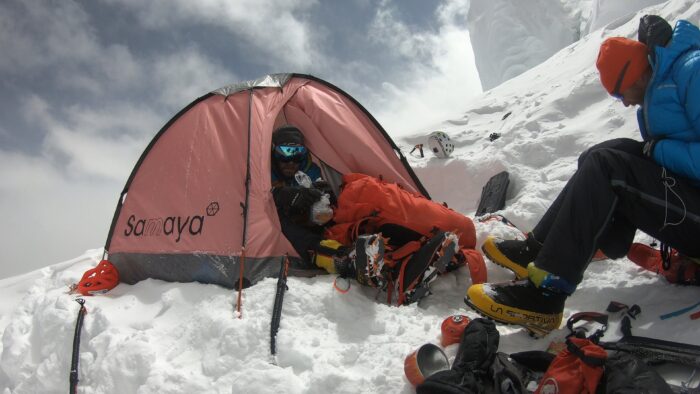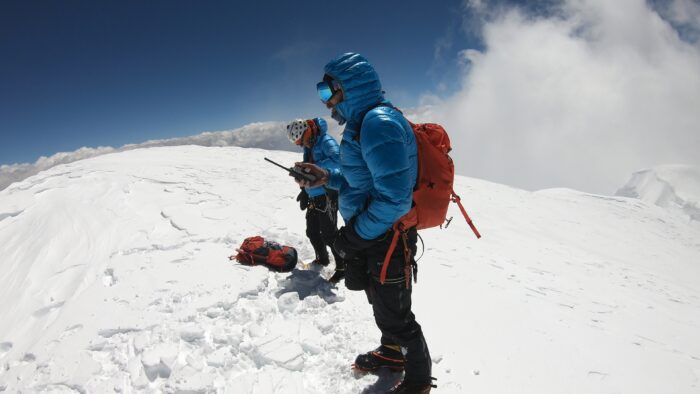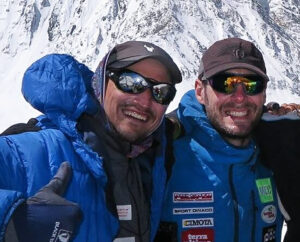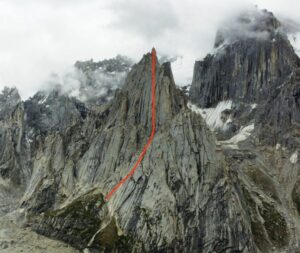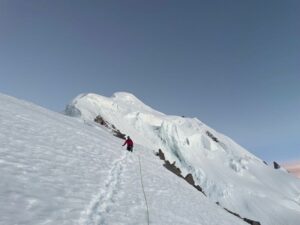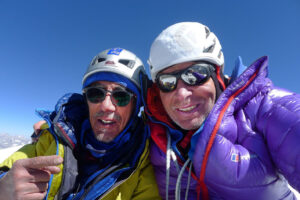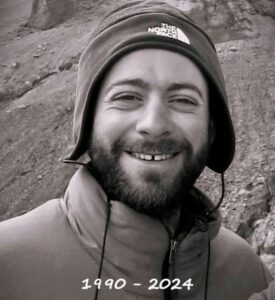They passed almost unnoticed, but they have solved one of the most stubborn problems in the Karakoram. Czech climbers Zdenek Hak, Radoslav Groh, and Jaroslav Bansky succeeded where many had failed before by summiting Muchu Chhish, the world’s highest unclimbed peak.
Back home, they have now shared a complete report and photos.
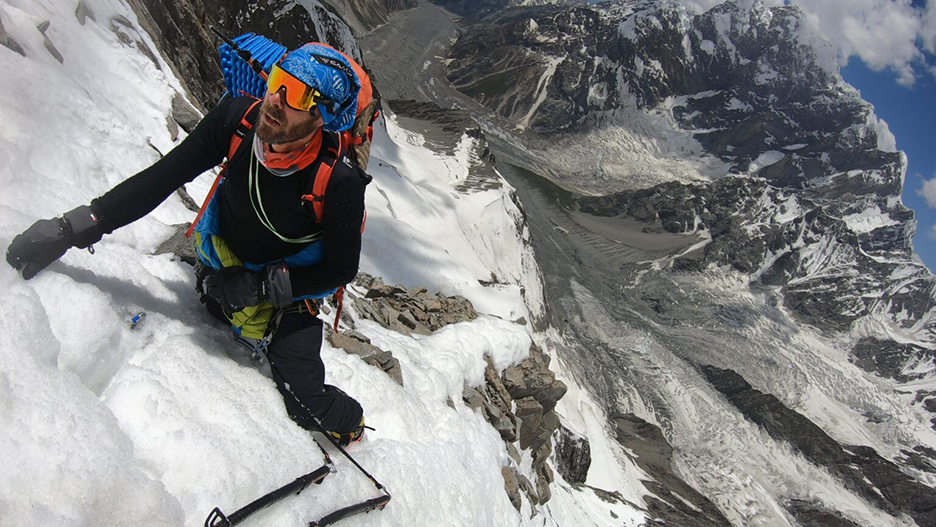
Zdenek Hak on Muchu Chhish. Photo: Zdenek Hak
Ironically, Hak never planned to climb on Muchu Chhish. Originally, he had wanted to lead an expedition to Afghanistan’s Hindu Kush, but his plans failed. Then, Groh phoned him to suggest that they take on 7,453m Muchu Chhish in the Batura Muztag range of Pakistan’s Karakoram.
This peak had been the lifetime dream of fellow Czech Pavel Korinek, so before their final decision, the climbers called Korinek for approval. Then on June 6, Hak and Groh traveled to Pakistan with Jaroslav Bansky.
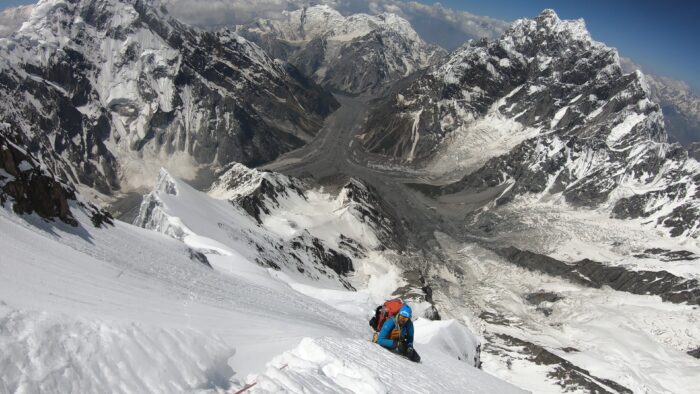
On Muchu Chhish. Photo: Zdenek Hak
The trio originally planned to acclimatize on a nearby 6,000’er, but Hak got sick. “After a short break, we moved over the Muchuchar Glacier to base camp under Muchu Chhish itself,” Hak wrote in his report to ExplorersWeb. “We had no choice but to acclimatize right there.”
Their acclimatization consisted of a four-day climb from June 25-28.
“We slept at 4,600m, 5,400m, and 6,100m,” Hak wrote. “Except for the last camp, we follow the route of [our] planned ascent, which led along the south ridge up to 7,300m on the main ridge.”
He admitted that this was not the ideal way to prepare for the climb, but they had no more time. Forecasts called for a week of good weather, and they couldn’t afford to miss that chance.
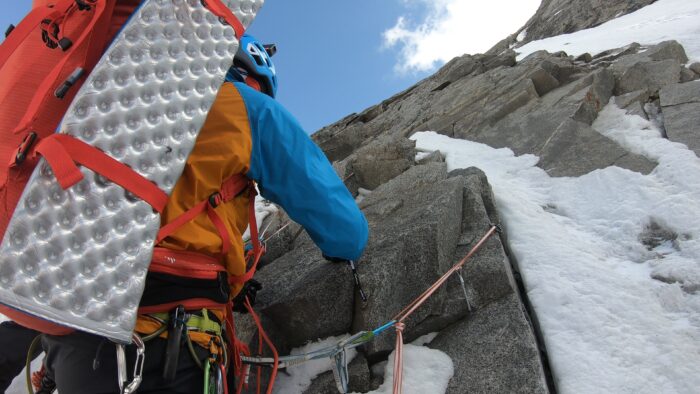
Mixed terrain on Muchu Chhish. Photo: Zdenek Hak
The final push started on July 1. Here is Hak’s account of the climb:
On the first day, we hiked up the rocky couloir to the glacier at 4,800m, and followed it up to 5,350m, where we built our first bivouac. We gained some 1,400m of altitude that day. At 10:30 am, it was already unbearably hot.
The next day, we finally started the proper climb. The first pitches were mixed and rock climbing up to M4. Then it was all ice, and it seemed endless. We climbed diagonally up to 6,300m and pitched our Camp 2 under a serac.
Ice on the route. Photo: Zdenek Hak
The third day was hard physical work, climbing on snow-ice ramps up to 70º steep. The snow was so deep in places that we often used special snowshoes from Auftriib, inserted between the boot and the crampons. It was an invaluable aid; I don’t think we could have moved any further without them. We gained 500 hard-earned vertical meters to our bivy site at 6,750m that day.
The fourth bivouac on Muchu Chhish. Photo: Zdenek Hak
Another 500 meters of altitude awaited us the next day on less steep terrain. We needed to be careful to choose the right trail among the crevasses, again on our snowshoes and with Bansky breaking trail most of the time.
We pitched out fourth bivouac in the early evening at 7,250m, just below the summit ridge. Snow fell that night, but the skies cleared on the morning of July 5, allowing us to leave tent and some gear behind and proceed toward the summit, which was 1,500m west of us.
One of the Czech climbers at a traverse on Muchu Chhish. Photo: Zdenek Hak
After the first 150m, the terrain steepened again, until we reached a large rock tower below the headwall. There were another 150 vertical meters to the top. Bansky broke the trail again and led us to the top at 10:20 am local time. That was it, there was no higher point around. I left a snow anchor there with our signatures and the inscription ‘Muchu Chhish- Krkonoše Expedition.’
On the summit of Muchu Chhish. Photo: Zdenek Hak
Their descent was hard in a whiteout, especially since the wind had covered their tracks. Several times, the climbers had to double back, following their own footprints, and try again until they hit the right trail down. That took most of their remaining energy.
“We were lucky to arrive at a rocky corner that we followed down back to our tent,” Hak wrote. “We didn’t hang around for too long. Soon, we resumed the descent.”
The weather quickly worsened, and the climbers continued in a total whiteout. Hak said he had to take his goggles off to avoid the crevasses. Luckily, he has a habit of studying the surroundings during his climbs and tries to remember all the physical references.
“This helps me a lot when descending in a similar situation,” Hak noted.

Summit day on Muchu Chhish. Photo: Zdenek Hak
“The visibility improved below 7,000m, and we easily got back to the location of our previous bivouac at 6,750m,” Hak said.
The weather was expected to worsen further, so they set off very early the following day. Quickly, they descended 1,500m vertical meters to the glacier.
“By noon, it was again terribly hot, and avalanches were falling all around us,” Hak said. “Even the glacier route didn’t look safe, but we decided to descend further.”
Luckily, the weather held that day. They took some risks but remained careful with each step and reached Base Camp in the late afternoon.
Rain started the following day as the climbers left camp and hiked back toward the village of Aliabad.
